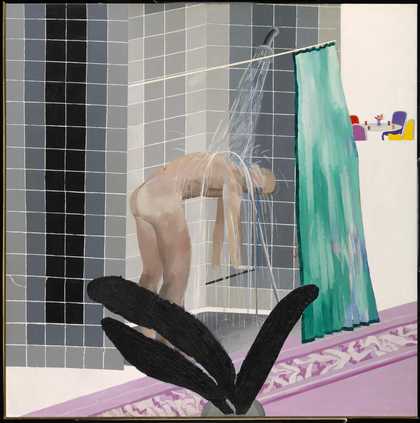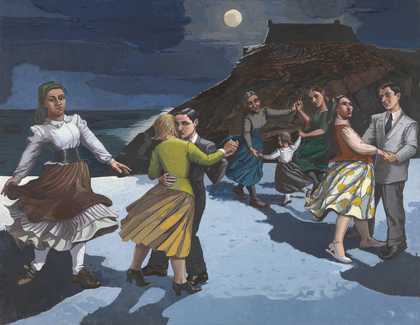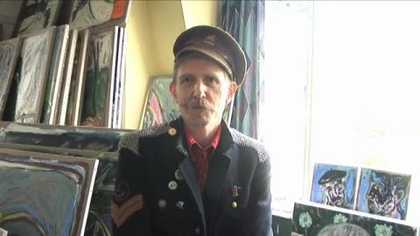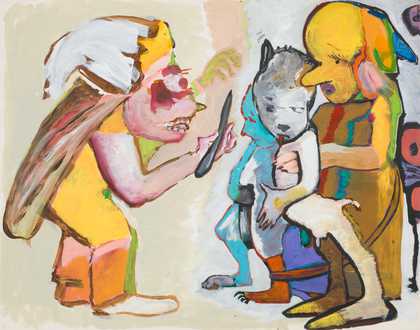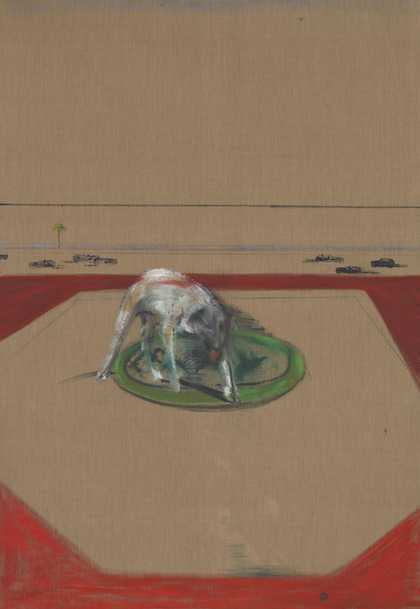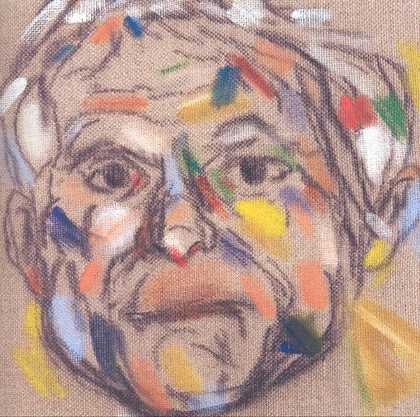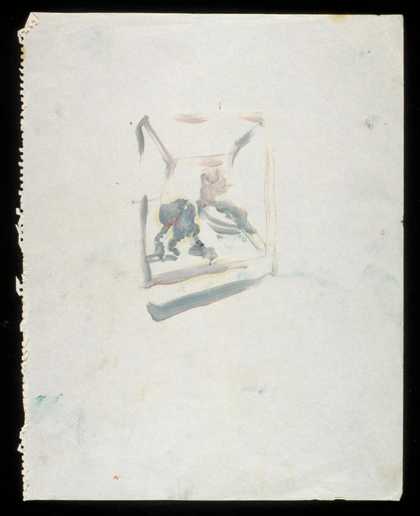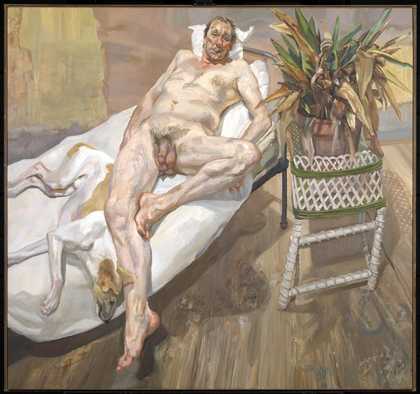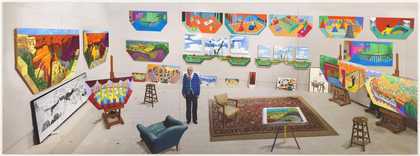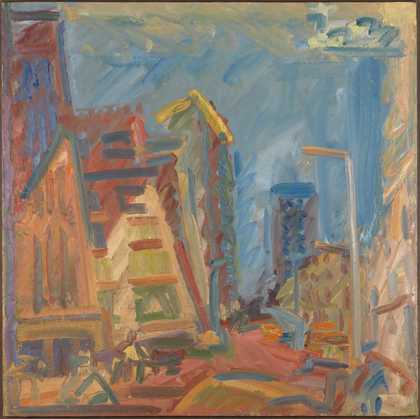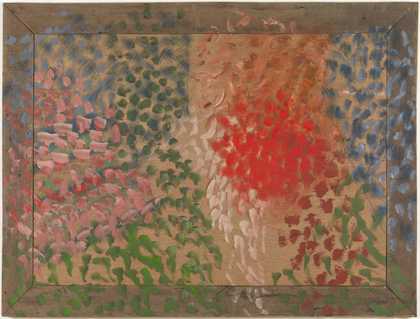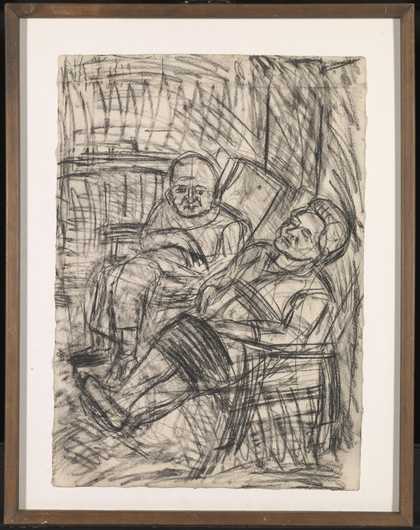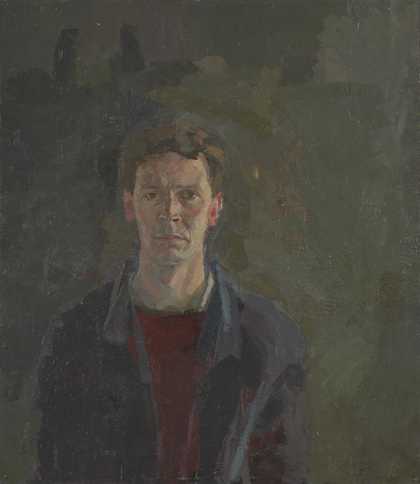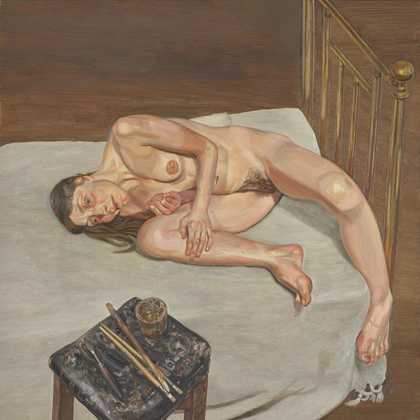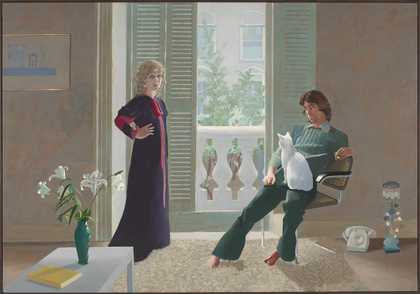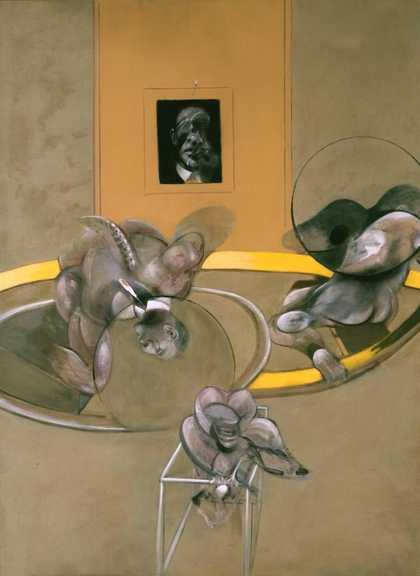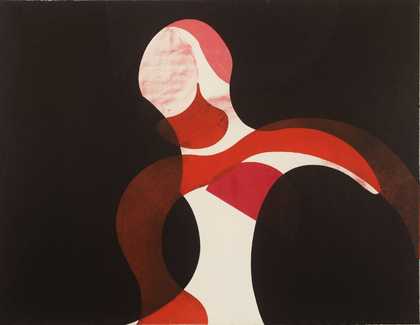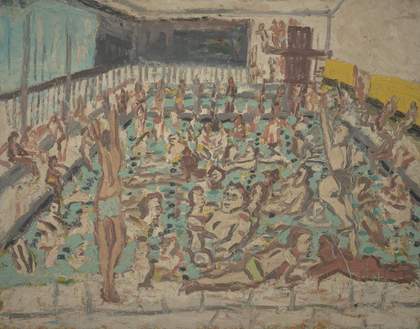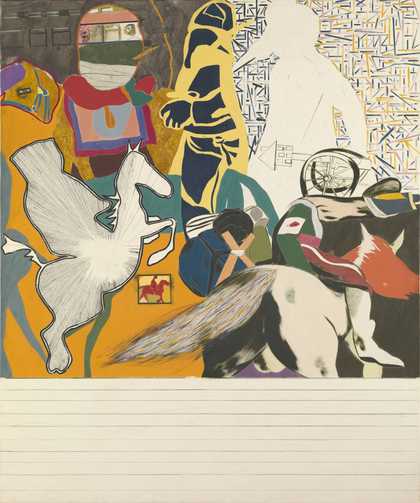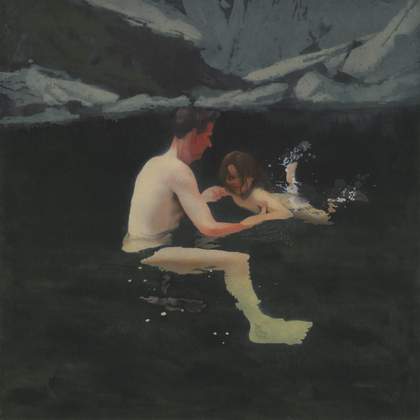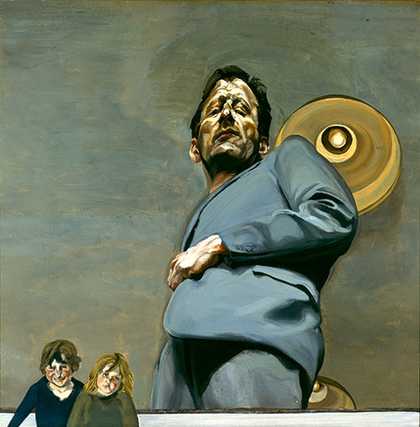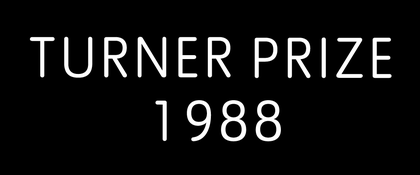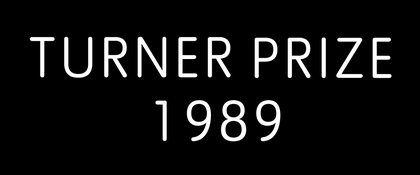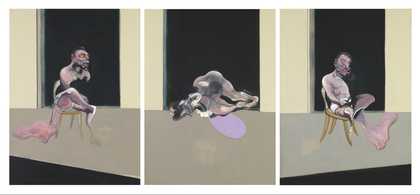
Francis Bacon
Triptych August 1972 (1972)
Tate
In 1976, at the height of minimal art and conceptual art, the American painter R.B. Kitaj, then based in Britain, organised an exhibition titled The Human Clay at the Hayward Gallery in London. It exclusively consisted of figurative drawing and painting, which proved to be highly controversial to an art world which was dominated by abstraction. In his catalogue text, Kitaj used the term School of London loosely to describe the artists he had brought together. The name has stuck to refer to painters at that time who were doggedly pursuing forms of figurative painting.
The chief artists associated with the idea of the School of London, in addition to Kitaj himself, were Michael Andrews, Frank Auerbach, Francis Bacon, Lucian Freud, David Hockney (although living in the USA), Howard Hodgkin, and Leon Kossoff. The work of these artists was brought into fresh focus and given renewed impetus by the revival of interest in figurative painting by a younger generation that took place in the late 1970s and the 1980s (see neo-expressionism and new spirit painting).

